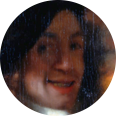Artwork of Johannes Vermeer canvas prints & artprints
Johannes Vermeer is a key figure in the history of Dutch painting. From his youth to his death in the town of Delft, this 16th-century Dutch painter, who devoted his entire life to producing genre paintings of exceptional quality, is today considered one of the masters of the genre.
Discover the finest paintings by one of the representatives of the golden century of Dutch painting available in the catalog, including his most famous oil on canvas "The Girl with the Pearl" and his total mastery of chiaroscuro, his masterpiece "The Dairymaid", a perfect representation of the genre scene, or "The Art of Painting" and its draperies directly inspired by the painter's youth.
Treat yourself to an art print of one of the greatest Flemish painters, Johannes Vermeer, and discover his biography.
Biography of Johannes Vermeer
Johannes Vermeer's childhood amidst paintings
Johannes Vermeer was born in 1632 in Delft, in what are now the Netherlands, into an atypical family that was to have a major influence on his work. His father, a weaver and upholsterer by trade, also owned an inn in the town of Delft, where he took advantage of the opportunity to enter the art market. Through his inn, he met a number of art collectors, to whom he sold paintings by Flemish artists. It was in this special atmosphere of paintings, fabrics and encounters that Johannes Vermeer grew up as a spectator. Many of these characteristics were to be found in his later paintings, with compositions featuring fabrics and characters typical of Flemish society, in scenes of everyday life.
Dutch academic painting at the heart of Johannes Vermeer's training
Johannes Vermeer's training is a little-documented mystery. We can be certain, however, that he was accepted as a master at the St. Luke's Guild in Delft in 1953, a cooperative of artists promoting a variety of artistic disciplines, from painting to engraving to sculpture. Joining the guild meant training with the great painters of the Delft bourgeoisie at the time. Leonard Bramer, Evert van Aelst and Gerard ter Borch are all artists who may have trained the young Vermeer in genre scenes, still lifes and various Dutch painting techniques recognized at the time. Johannes Vermeer's early paintings were inspired by the Amsterdam school, as evidenced by the history painting "Diana and Her Companions", strongly inspired by the work of Rembrandt. The Dutch painter was also influenced by Caravaggio, via the Caravaggesque school of Utrecht, where chiaroscuro plays a predominant role in this pictorial genre.
Johannes Vermeer: a master of genre painting
After his marriage to Catharina Bolnes, a wealthy Catholic, Vermeer devoted himself entirely to his painting and family life. The latter is not at the forefront of the artist's work. Instead, Vermeer specialized in genre scenes, which were to form the bulk of his work. This type of painting, less popular in the 17th century than other academic painting styles such as history or portraiture, but more renowned than still life or landscapes, offers a background depiction of domestic interiors, with a central, often enigmatic figure in the foreground, in an intimate scene imbued with realism. The Dutch artist paints slowly, lingering on the details that make his canvases elegant and refined. The interplay of light and shadow, and the use of the camera obscura process, gave his paintings a photographic style close to human vision. In the pure tradition of the golden age of Dutch painting, Vermeer created masterpieces of the genre, including "The Milkmaid" (1658), "The Girl with the Pearl" (1665) and "The Lacemaker" (1669), among the sixty or so paintings he produced throughout his life. He went on to become one of Delft's leading artists, and was regarded in his home town as one of the great masters of genre painting, following in the footsteps of his contemporaries Frans Hals in Haarlem and Rembrandt in Amsterdam.
Late recognition for Johannes Vermeer
Although Vermeer had made a name for himself among the Dutch painters of Delft, recognition of his genre paintings did not extend much beyond the town's borders. This lack of national recognition meant that, unlike other great Dutch painters of the period, Vermeer ended his life in debt and relative anonymity in 1675. The country's political situation, the fact that the Delft bourgeoisie were the only buyers of Vermeer's work, and the attraction at the time for paintings by Baroque masters with religious or historical themes, rather than genre scenes, were all reasons why Johannes Vermeer found it difficult to make his mark in Flemish painting at the time. It was not until the mid-nineteenth century and throughout the twentieth century that the painter gained the recognition he deserved. In France, following articles by the art critic Théophile Thoré-Burger in his gazette des beaux-arts, numerous exhibitions were devoted to him, and France's love affair with Vermeer resulted in the purchase of several works, notably by the Louvre Museum, where we find "The Lacemaker" and "The Astronomer". Vermeer will also be honoured in his own country, in The Hague and Amsterdam, where the majority of his works reside, with his famous oil painting "The Girl with the Pearl", the masterpiece "The Milkmaid" and "Woman in Blue Reading a Letter". In the United States, at the Metropolitan Museum of Arts in New York, in the United Kingdom at the National Gallery, and in Germany, among other countries, Vermeer will be immortalised with the exhibition of many of his paintings in international museums.
Johannes Vermeer: an inspiration to many artists
Now pantheonised as the star of seventeenth-century Dutch Baroque painting, following in the footsteps of such great masters of the genre as Van Eyck, Adriaen Brouwer and Jan van de Venne, Johannes Vermeer inspired a plethora of painters from the eighteenth century through the nineteenth to the twentieth. Naturalists such as Van Gogh, surrealists such as Dali and impressionists such as Pissarro found inspiration in the work of the Flemish painter, with his use of chiaroscuro and the expression of everyday life in his canvases. Today, Vermeer's works can even be found in Pop Art, having popularised the Dutch artist in mainstream culture.
Learn more about the life and the works of Johannes Vermeer.



























































